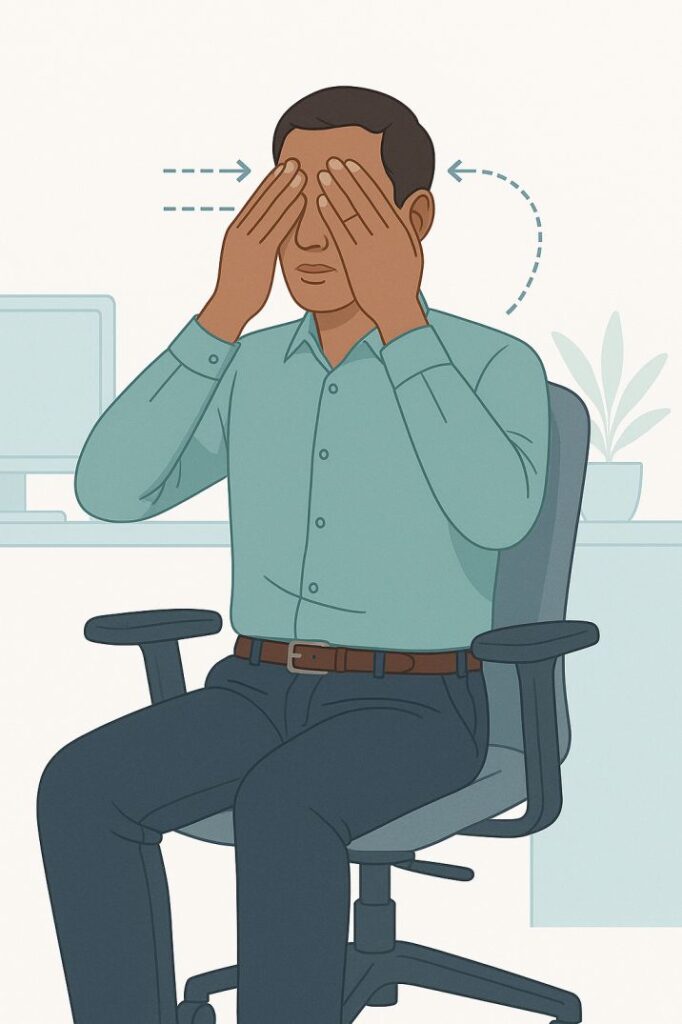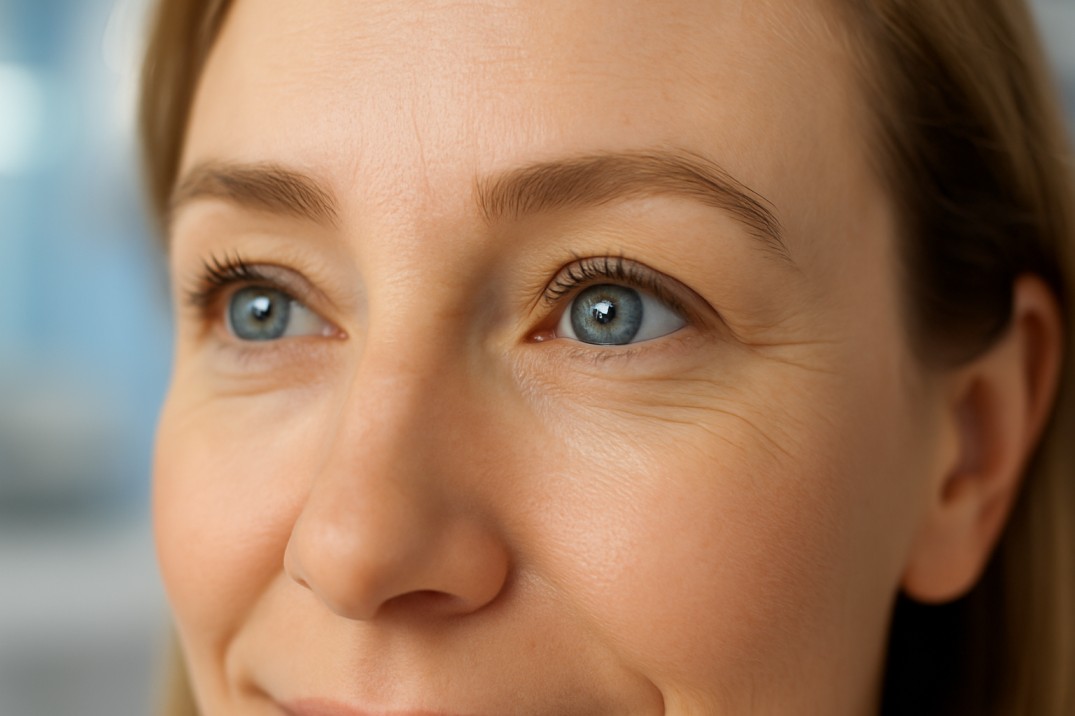Giving Your Eyes a Rest: Expert Guide | Cannon EyeCare Seattle
Bottom Line Up Front: Giving your eyes a rest through proven techniques like the 20-20-20 rule, palming exercises, and proper workplace ergonomics can dramatically reduce digital eye strain symptoms that affect 66% of knowledge workers. Combined with professional eye care from specialists like Cannon EyeCare in Seattle, these methods help maintain optimal vision health for busy professionals seeking effective solutions for giving their eyes a rest.
Why Giving Your Eyes a Rest Matters More Than Ever
The average American now spends over 7 hours daily on screens (up from 6 hours 40 minutes in 2024), making giving your eyes a rest essential for maintaining healthy vision and workplace productivity. A recent comprehensive meta-analysis of 103 studies with 66,577 participants reveals that digital eye strain affects an astounding 66% of knowledge workers, with symptoms ranging from headaches and blurred vision to neck pain and chronic fatigue.
For Seattle’s thriving professional community—particularly the tech workers, healthcare professionals, and university staff that make up our city’s backbone—understanding how to properly rest your eyes isn’t just about comfort. It’s about protecting your most valuable sense while maintaining peak performance in an increasingly screen-dependent work environment where the average American now spends over 7 hours daily on screens.
Understanding Digital Eye Strain: The Modern Epidemic
Digital eye strain (DES), also called Computer Vision Syndrome, encompasses the collection of eye and vision-related problems resulting from prolonged digital device use. Unlike reading printed materials, digital screens force our eyes to work harder due to:
- Pixelated display that lacks the sharp definition of print
- Blue light emission can disrupt natural eye function
- Reduced blink rates (from 15 times per minute to just 5-7)
- Fixed focusing distance that overworks the accommodation muscles
The Seattle Professional’s Challenge
Seattle professionals face unique eye strain challenges. The combination of long work hours, frequent screen time, and the Pacific Northwest’s variable lighting conditions creates a perfect storm for eye fatigue. Whether you’re coding in South Lake Union, analyzing data at the University of Washington, or managing patients at Seattle Children’s Hospital, your eyes are working overtime.
The Science-Backed Benefits of Giving Your Eyes a Rest
Recent Research Reveals Escalating Trends
Three groundbreaking studies from 2024-2025 demonstrate the critical importance of eye rest:
-
Comprehensive Meta-Analysis (2024): Reviewing 103 studies with 66,577 participants across 20 countries, researchers confirmed that 66% of knowledge workers experience some degree of computer vision syndrome, making eye rest techniques more crucial than ever.
-
Palestinian School Children Study (April-May 2024): Research on 492 children revealed that prolonged digital device use without adequate rest periods led to significant increases in eye strain symptoms, with over 78% of participants experiencing one or more digital eye strain symptoms.
-
UK/Ireland Digital Eye Strain Study (2024): This comprehensive analysis of working adults found that 62.6% experienced digital eye strain, with participants spending an average of 9.7 hours daily on digital devices. The study emphasized that regular eye rest breaks were the most effective intervention.
How Eye Rest Transforms Your Vision Health
When you give your eyes a rest, several beneficial processes occur:
Muscle Relaxation: The ciliary muscles that control focusing get a chance to relax, reducing accommodation fatigue that causes blurry vision and headaches.
Tear Film Restoration: Resting periods allow your tear film to redistribute and stabilize, combating the dry eye symptoms that plague 89.5% of digital device users.
Blood Circulation Improvement: Eye rest exercises enhance blood flow to ocular tissues, delivering essential nutrients and removing metabolic waste.
Proven Techniques for Giving Your Eyes a Rest
The Gold Standard: 20-20-20 Rule
The most scientifically validated method for giving your eyes a rest remains the 20-20-20 rule: Every 20 minutes, look at something 20 feet away for at least 20 seconds.
Why It Works: This technique forces your eye muscles to change focus from near to far vision, providing crucial relief to the accommodation system. Research shows this simple practice can reduce digital eye strain symptoms by up to 35%.
Seattle Professional Tip: Use the Space Needle or Elliott Bay as distant focal points when practicing the 20-20-20 rule from downtown offices. University District workers can focus on the Cascade Mountains visible from the upper floors.
Advanced Eye Rest Techniques
Palming: The Ancient Practice with Modern Benefits
Palming, derived from yoga traditions and refined by vision therapy, provides deep relaxation for overworked eyes.
How to Palm:
- Sit comfortably and rub your hands together for 10-15 seconds until warm
- Gently cup your palms over closed eyes without applying pressure
- Ensure complete darkness while maintaining natural breathing
- Visualize peaceful scenes while focusing on the darkness
- Continue for 30 seconds to 5 minutes
Scientific Backing: A 2020 study of 40 nursing students found that those who practiced palming exercises showed statistically significant reductions in eye fatigue after 8 weeks of regular practice.
Blinking Exercises for Digital Workers
Conscious blinking combats the reduced blink rate that accompanies screen work.
Rapid Blink Technique: For 2 minutes, blink rapidly every 4 seconds to stimulate tear production.
Slow Blink Method: Close your eyes completely for 2 seconds every 30 seconds for 2 minutes, ensuring full eyelid closure.
Eye Movement Exercises
These exercises stretch and strengthen the muscles that control eye movement:
Figure-8 Exercise: Trace an imaginary figure-8 pattern with your eyes, alternating directions every 10 repetitions.
Directional Gazing: Look up, down, left, and right in a slow, controlled manner, holding each position for 3-5 seconds.
Workplace Integration Strategies
Optimizing Your Seattle Office Environment
Lighting Adjustments: Position your monitor perpendicular to windows to minimize glare from the often-bright Seattle sky reflecting off Elliott Bay or Lake Washington.
Screen Positioning: Your monitor should be 20-26 inches away, with the top of the screen at or slightly below eye level.
Blue Light Management: Consider blue light filtering glasses or software that adjusts screen temperature based on time of day, particularly important during Seattle’s long winter nights.
The Professional’s Eye Rest Schedule
9:00 AM: Start your day with 2 minutes of palming exercises. Every Hour: Implement the 20-20-20 rule with intentional distance viewing. Noon: Mid-day eye massage and movement exercises 3:00 PM: Afternoon palming session to combat late-day fatigue End of Workday: 5-minute comprehensive eye rest routine
Advanced Eye Rest Solutions: When to Choose Cannon EyeCare
While self-care techniques are essential, some eye strain symptoms indicate the need for professional evaluation. Cannon EyeCare, with locations in University Village and Pike Place Market, specializes in addressing the complex vision needs of Seattle professionals.
Warning Signs That Require Professional Attention
- Persistent headaches despite regular eye rest
- Blurred vision that doesn’t improve with breaks
- Dry eye symptoms that worsen throughout the day
- Eye pain or burning sensations
- Difficulty focusing when switching between near and far objects
Current Pricing Information
Routine Eye Exams: $225 for a comprehensive eye examination. Contact Lens Fitting: Approximately $345 (price may vary based on complexity) Insurance: In-network with Premera, Regence, Uniform Medical, HMA, Lifewise, Medicare, Blue Cross/Blue Shield, and Kaiser Permanente PPO plans
Why Choose Cannon EyeCare for Your Eye Rest Journey
Cannon EyeCare stands out as Seattle’s premier destination for professionals struggling with digital eye strain. Dr. Mark and Dr. Miranda Cannon understand the unique challenges facing Seattle’s professional community, combining expertise in giving your eyes a rest with comprehensive vision care. Their approach includes:
Digital Eye Strain Evaluations: Specialized testing to assess how prolonged screen use affects your vision system.
Dry Eye Management: Advanced treatments for the dry eye symptoms that affect nearly 90% of digital device users.
Ergonomic Consultations: Personalized advice on optimizing your workspace for eye health.
Contact Information:
- University Village location: (206) 522-9323
- Pike Place Market office: (206) 448-7739
Creating Your Personalized Eye Rest Plan
Assessment: Understanding Your Risk Factors
High-Risk Indicators:
- Screen time exceeding 6 hours daily
- History of dry eye symptoms
- Previous vision problems
- Work in air-conditioned environments
- Age over 40 (presbyopia increases strain)
Customizing Techniques for Your Lifestyle
For Tech Professionals: Emphasize micro-breaks every 15 minutes with quick blinking exercises between the standard 20-20-20 routine.
For Healthcare Workers: Focus on palming exercises during shift changes and use artificial tears approved by your eye care provider.
For University Staff/Students: Incorporate eye movement exercises between lectures or study sessions, particularly during exam periods with increased reading demands.
Building Sustainable Habits
Week 1-2: Master the 20-20-20 rule with phone reminders Week 3-4: Add palming exercises twice daily Week 5-6: Integrate full eye movement routine Week 7-8: Optimize workspace ergonomics Ongoing: Schedule regular eye exams with professionals like Cannon EyeCare to ensure your eye rest techniques are maximally effective
Advanced Solutions for Persistent Eye Strain
Technology Integration
Eye Rest Apps: Applications like “Eye Care 20 20 20” can automate reminder systems for busy professionals.
Computer Settings: Adjust refresh rates, contrast, and brightness to optimal levels (typically matching your surrounding lighting).
Ergonomic Equipment: Invest in adjustable monitor stands, document holders, and task lighting to support natural eye positioning.
Nutritional Support for Eye Health
Omega-3 Fatty Acids: Support tear film stability—particularly important for Seattle’s dry indoor environments.
Antioxidants: Lutein and zeaxanthin help protect against blue light damage.
Hydration: Maintain adequate fluid intake to support natural tear production.
Long-Term Benefits of Giving Your Eyes a Rest
Giving your eyes a rest isn’t just about immediate comfort—it’s an investment in lifelong vision health. By implementing these evidence-based techniques now, Seattle professionals can:
- Maintain peak productivity without sacrificing eye comfort
- Prevent progression of digital eye strain symptoms
- Support overall health through reduced stress and improved sleep
- Preserve vision quality for decades of professional success
Environmental Considerations for Seattle Professionals
Seasonal Adaptations
Winter Months: Increased indoor heating and reduced natural light require more frequent artificial tear use and enhanced lighting considerations.
Summer Brightness: Glare from the sun reflecting off Puget Sound and surrounding waters necessitates careful window positioning and possible anti-glare screen filters.
Rainy Season: The gray, diffuse light common in Seattle can cause eye strain due to reduced contrast—consider full-spectrum lighting for your workspace.
Measuring Your Progress
Subjective Indicators
Track your symptoms weekly:
- Frequency of headaches
- End-of-day eye fatigue levels
- Sleep quality improvements
- Overall work comfort
Objective Measures
- Increased productivity during afternoon hours
- Reduced need for frequent prescription changes
- Improved performance on vision-intensive tasks
Your Action Plan: Starting Today
Immediate Steps (Next 24 Hours):
- Set up 20-20-20 rule reminders on your devices
- Adjust your monitor position and lighting
- Practice your first palming exercise
This Week:
- Implement a complete daily eye rest routine
- Evaluate your workspace ergonomics
- Schedule an eye exam if experiencing persistent symptoms
This Month:
- Master all eye rest techniques
- Optimize your work environment
- Consider professional consultation with specialists like Cannon EyeCare for personalized eye rest strategies.
Conclusion: Your Eyes Deserve Expert Care
Giving your eyes a rest through proven techniques can dramatically improve your comfort and productivity as a Seattle professional. However, the most effective approach combines self-care with professional guidance from experienced optometrists who understand the unique challenges of modern digital work.
Whether you’re experiencing occasional eye strain or dealing with persistent symptoms, the combination of regular eye rest techniques and comprehensive professional care ensures your vision remains sharp, comfortable, and healthy throughout your career.
Ready to take the next step? Schedule a comprehensive eye exam with Cannon EyeCare today and discover how professional eye care can enhance your techniques for giving your eyes a rest for optimal vision health.
FAQs
-
Follow the 20-20-20 rule: every 20 minutes, look at something 20 feet away for 20 seconds




